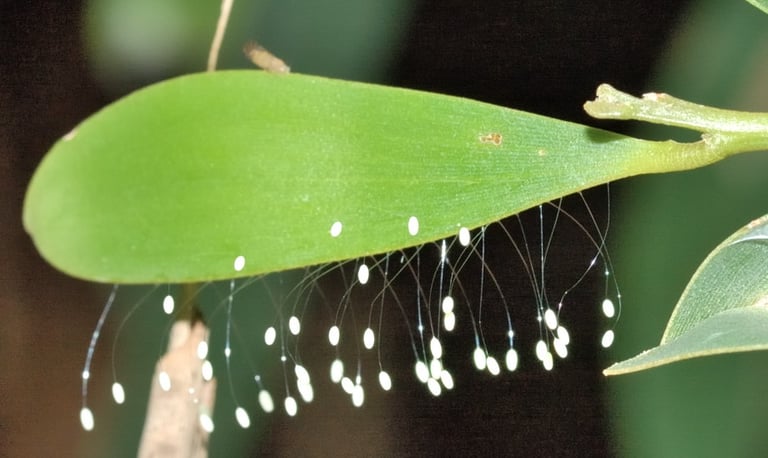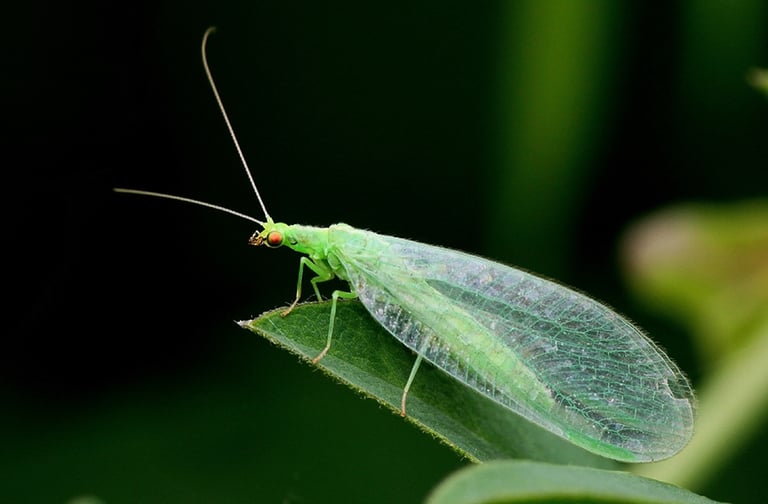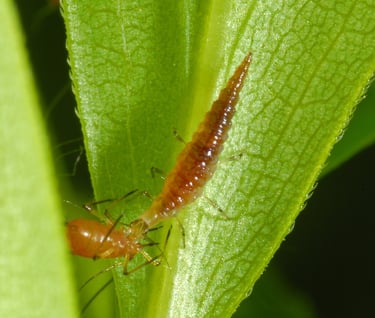Biological Control Agent -Green lacewing, Chrysoperla (=Chrysopa) carnea, C. rufilabris (Neuroptera: Chrysopidae)
Although the adults of Chrysoperla carnea, feed on nectar, pollen and aphid honeydew, the larvae are active predators and feed on aphids and other seventy different prey species in five insect orders. It has been used in the biological control of insect pests on crops.
Although the adults of, Chrysoperla carnea feed on nectar, pollen and aphid honeydew, the larvae are active predators and feed on aphids and other seventy different prey species in five insect orders. It has been used in the biological control of insect pests on crops.
On crops, the larvae have been reported as attacking several species of aphids, red spider mites, thrips, whitefly, the eggs of leafhoppers, leaf miners, psyllids, small moths and caterpillars, beetle larvae and the tobacco budworm. They are considered an important predator of long-tailed mealybug in greenhouses and interior plantscapes.
These lacewing larvae are considered generalist beneficials but are best known as aphid predators. The larvae are sometimes called aphid lions, and have been reported to eat between 100 and 600 aphids each, although they may have difficulty finding prey in crops with hairy or sticky leaves.
Natural populations of Chrysoperla have been recorded as important aphid predators in potatoes.
Insecticide resistance in Aphids
Aphids are a group of insects that have become global pests in agriculture and frequently exhibit insecticide resistance. The green peach aphid, Myzus persicae, has developed resistance to at least seventy different synthetic compounds, and different insecticide resistance mechanisms have been reported worldwide.
Resistance that can quickly spread within a population
The scientists also performed genetic analyses with aphids randomly collected from the air between 2001 and 2008. This showed the high speed at which resistance can emerge in the general aphid population: two years following the placing on the market of a new product, containing a pyrethroid and a carbamate, the frequency of aphid clones combining alleles conferring resistance to these two substances had strongly increased.
Novel IPM solution for controlling the population of aphids and other soft bodied insects
During our field trials in pepper, potato, tomato, and eggplant release of Chrysoperla carnea along with deployment of our Ai-Enabled insect-pest control device BraveHawk® Monza achieved great level of control on aphids, this success in controlling aphids population and restricted spread of various viral diseases in these crops.















